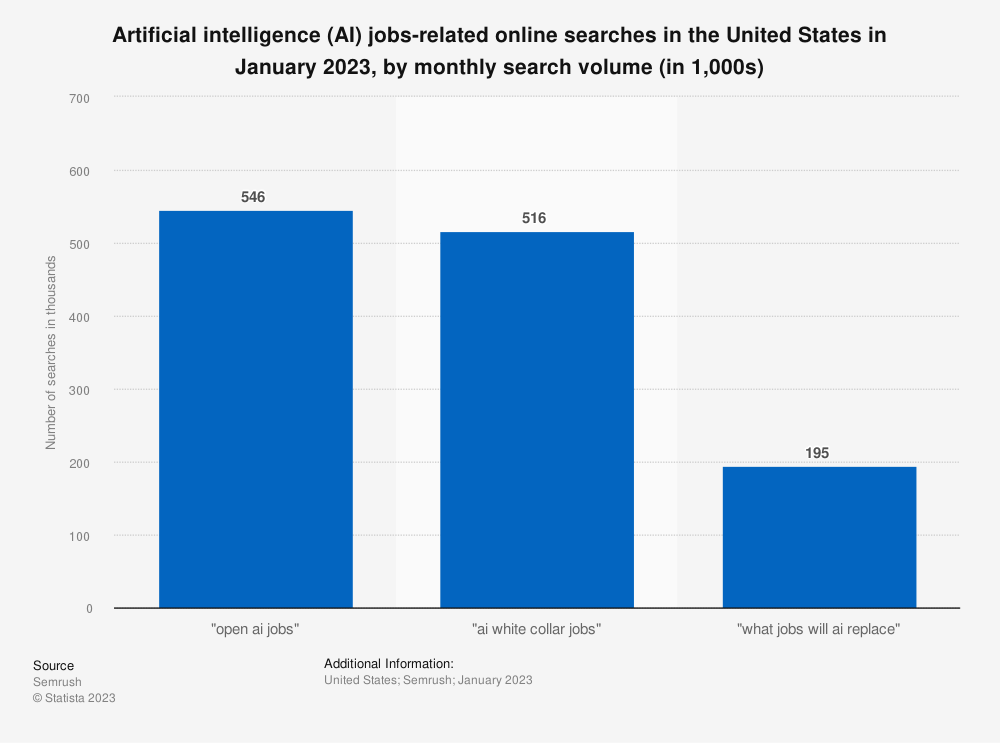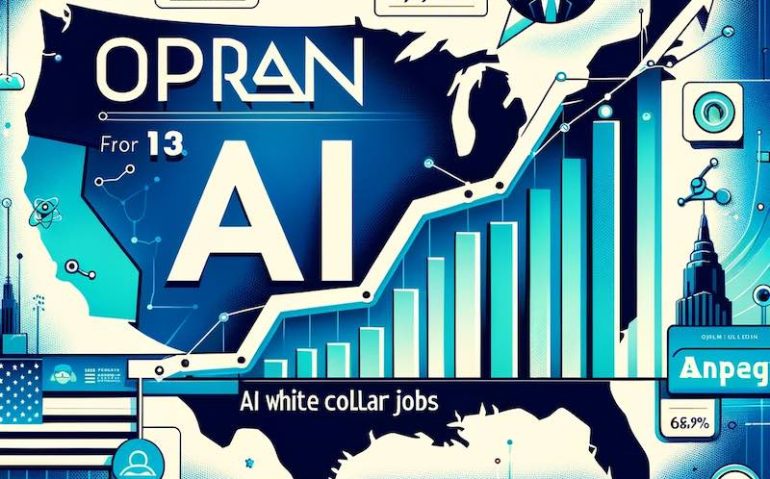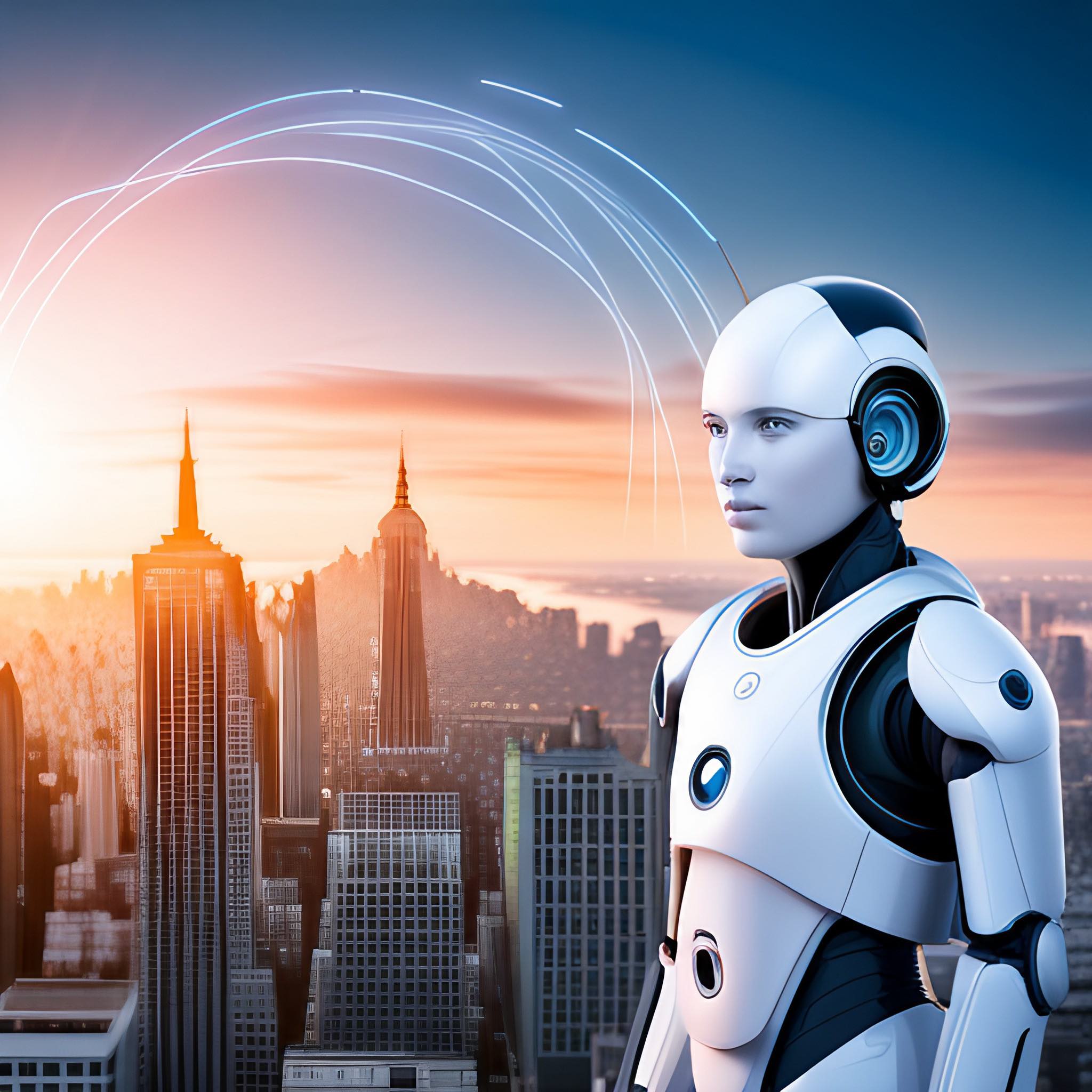Historical Context, AI and the Future of Jobs
The dawn of artificial intelligence (AI) in the job market is poised to create a paradigm shift reminiscent of the Industrial Revolution. While the Industrial Revolution marked a significant leap in technological advancement, its immediate impact on the quality of life for workers was less optimistic. The economic boom it fostered did not initially translate into benefits for the individual worker. It took years, along with the advent of workers’ benefits, unions, and government intervention, for the workforce to truly reap the rewards of this industrial upheaval. We see the first events related to AI and Jobs with the WGA Strike.
Similarly, AI’s integration into the workforce signals a transformative era. However, this transition comes with its own set of challenges. The introduction of AI and automation could initially disrupt the job market, particularly impacting the middle class, who might experience a period of adjustment as roles and industries evolve.
The comparison to the Industrial Revolution is apt, as it highlights both the transformative potential of AI and the possible immediate hardships. The economic and social landscape of the Industrial Revolution eventually led to increased standards of living and technological progress, but not without significant growing pains and adjustments. Similarly, AI promises to revolutionize how we work and live, but it also requires a period of adaptation.
Impact of AI and the Future of Jobs is twofold. On one hand, it presents opportunities for increased efficiency and the creation of new job sectors. On the other hand, it poses the risk of job displacement, especially for easily automated roles. This dichotomy is at the heart of the current discourse on AI and employment.
The challenge for society is to manage this transition to maximize the benefits of AI while minimizing its negative impacts. This will likely involve upskilling and reskilling workers, adapting educational systems to prepare future generations for an AI-driven world, and possibly even rethinking our approach to employment and social welfare.
AI’s Role in Reducing Costs and Increasing Productivity
The influence of AI is already making its mark across various sectors, significantly reshaping fields like law, accounting, and writing. AI’s role in these domains has predominantly reduced the costs associated with content creation and intellectual services. This is primarily attributed to AI’s ability to automate routine tasks and streamline complex processes, thereby enabling professionals to achieve higher productivity rates, sometimes at a lower cost.
In the legal field, AI tools can analyze large volumes of case law and legal precedents, offering attorneys rapid insights that would have required hours of manual research. Similarly, AI systems can handle repetitive tasks like data entry and analysis in accounting, freeing accountants to focus on more complex, strategic advisory roles. Writers and content creators leverage AI for everything from grammar and style checking to generating basic news reports and articles, allowing them to produce more content quickly.
It is about productivity
This enhanced productivity, however, is a double-edged sword. While it means that professionals can do more in less time, it also decreases the costs of these services. This reduction can result in lower revenue for those who charge by the hour or project. Moreover, as AI tools become more accessible and widespread, the market may see an influx of new competitors, intensifying competition and potentially driving down prices further.
This scenario raises a critical question: how do we balance the increased productivity enabled by AI with the need for sustainable economic models for the workforce? The answer might lie in a combination of strategies. Professionals might need to adapt by offering new, higher-value services that AI cannot provide, focusing on creative, strategic, and empathetic tasks that remain the domain of humans. Additionally, there may be a shift in pricing models, moving away from time-based billing to value-based pricing, where the focus is on the quality and impact of the work rather than the time spent on it.
Governments and educational institutions also play a crucial role in AI and the Future of Jobs. There is a growing need for policies that support continuous learning and skill development, ensuring that the workforce can stay ahead of technological advancements. Furthermore, education systems need to adapt, focusing not just on technical skills but also on fostering critical thinking, creativity, and emotional intelligence — skills that AI has yet to master.
AI’s role in reducing costs and increasing productivity is transforming professional landscapes. This transformation requires a multifaceted response that involves adapting skill sets, rethinking economic models, and evolving educational and policy frameworks. Successfully navigating this change will be key to ensuring that the benefits of AI are fully realized while minimizing its potential downsides.

Balancing AI’s Benefits and Challenges
As the world grapples with the growing influence of AI, the central challenge becomes balancing its benefits with the potential challenges it poses. This balancing act is particularly crucial for the middle class, poised to be most affected by the AI-driven job market transformation.
Embracing AI’s Productivity While Safeguarding Job Security
The increased productivity brought by AI is undeniable, but it must be leveraged in a way that doesn’t compromise job security and economic stability. One approach is through workforce education and retraining programs. As specific jobs become automated, workers need to upskill or reskill, allowing them to move into new roles where human skills are irreplaceable by AI. This transition could involve learning to work alongside AI, such as using AI tools for data analysis or shifting to entirely new fields.
Another aspect is the creation of new job roles that AI and automation can’t fulfill. While AI excels at repetitive or data-heavy tasks, it lacks the creativity, empathy, and critical thinking inherent to humans. Therefore, jobs that require these uniquely human skills are likely to grow. Industries focusing on human interaction, like mental health, customer service, or education, may see increased demand for skilled professionals.
AI and the Future of Jobs: The Role of Unions and Government in an AI Era
Just as the post-Industrial Revolution era saw the rise of workers’ benefits and unions, a similar trend may be necessary in the age of AI. More robust worker benefits, supportive unions, and proactive government intervention could be pivotal in ensuring an equitable transition to an AI-driven economy. These bodies could advocate for policies that protect workers from displacement, promote fair wages, and provide appropriate working conditions in an increasingly digital world.
Governments may also need to consider more innovative social strategies, such as Universal Basic Income (UBI), to buffer against the economic disruptions caused by AI. UBI proposes a regular, unconditional sum of money from the government to citizens, providing a safety net in the face of job displacements. While still debated, this concept represents a radical rethinking of social welfare in response to the profound changes by AI and automation.
Looking Ahead: A Future Shaped by Human-AI Collaboration
The future of jobs in an AI-driven world is not a zero-sum game where machines replace humans. Instead, it’s more likely to be a nuanced evolution of work where AI complements human skills. The jobs of the future may well be those that intertwine AI capabilities with human creativity, empathy, and strategic thinking, creating a collaborative synergy between humans and machines.
In preparing for this future, the focus should be on fostering an adaptable workforce that is continuously learning and ready to embrace new challenges. This preparation will require concerted efforts from all sectors of society — from governments and educational institutions to businesses and individuals.
AI as a Catalyst for New Opportunities and Social Strategies
The advent of AI is not just a story of challenges and disruptions; it’s equally a narrative of unprecedented opportunities. Breakthroughs like Google DeepMind’s discovery of 2.2 million new crystal structures exemplify AI’s capability to innovate and enhance various sectors. Such advancements are not merely academic; they possess the potential to revolutionize industries, from materials science to manufacturing.
New Job Opportunities and Market Evolution
These technological strides signal the emergence of job opportunities that were previously unthought-of. Drawing a parallel with history, just as carriage builders in the 1800s couldn’t have foreseen the impact of internal combustion engines, today’s workforce might be on the cusp of jobs that don’t currently exist. Innovations in materials and technologies will likely give birth to new industries, demanding skill sets and expertise that are today unknown. This evolution represents a profound shift in the job market, where adaptability and continuous learning become essential for professional relevance.
Government’s Role in a Shifting Landscape for AI Future of Jobs
With such a transformative wave, the role of governments becomes crucial in navigating the societal and economic impacts. The disruptions in the job market due to AI will necessitate new social strategies to ensure economic stability and social welfare. One such strategy under consideration is the Universal Basic Income (UBI), a concept where citizens receive a regular, unconditional sum of money from the government. The idea behind UBI is to provide a safety net in the face of job displacements, ensuring that the economy thrives even as the job market undergoes significant changes.
Balancing Economic Progress with Social Stability
Introducing such social strategies reflects a need to balance economic progress driven by AI with social stability. Governments must be proactive in fostering environments where AI can thrive and cushioning the societal impacts of these technological advancements. This balance is critical in ensuring that the benefits of AI are widespread and that the economy remains dynamic and inclusive.
AI as a Harbinger of Positive Change and Leisure Opportunities
Amidst the discussions about AI Future of Jobs, it’s crucial to recognize its potential for positive societal impact. Much like technological advancements in the past, AI promises to liberate individuals from time-consuming tasks, thereby enhancing the quality of life and opening new avenues for personal and economic growth.
AI and Personal Time
The liberation brought about by home appliances in the 1950s, which significantly reduced the time spent on housework, particularly for homemakers, is a pertinent example. This transformation allowed for more personal time, which led to the expansion of industries such as fashion and leisure. The advent of AI could mirror this impact on a much larger scale. By automating routine tasks and optimizing work processes, AI can free up considerable time for individuals, allowing them to pursue leisure activities, personal interests, and self-improvement.
Economic Implications of Leisure and Lifestyle Changes
The shift towards more personal time can also have profound economic implications. Just as the reduction in housework gave rise to the fast fashion industry and increased demand for leisure travel, AI’s time-liberating impact could spur the growth of new initiatives. These could range from enhanced entertainment sectors to novel forms of tourism, lifestyle services, and leisure activities that are yet to be conceived.
AI Future of Jobs: Cultivating a Society Focused on Well-being and Growth
In this light, AI’s role extends beyond mere tools for economic efficiency; it becomes a catalyst for a lifestyle transformation. A society where AI handles mundane tasks could focus more on personal well-being, community engagement, and creative pursuits. Such a shift promises enhanced individual lifestyles and paves the way for new economic sectors driven by these lifestyle changes.






